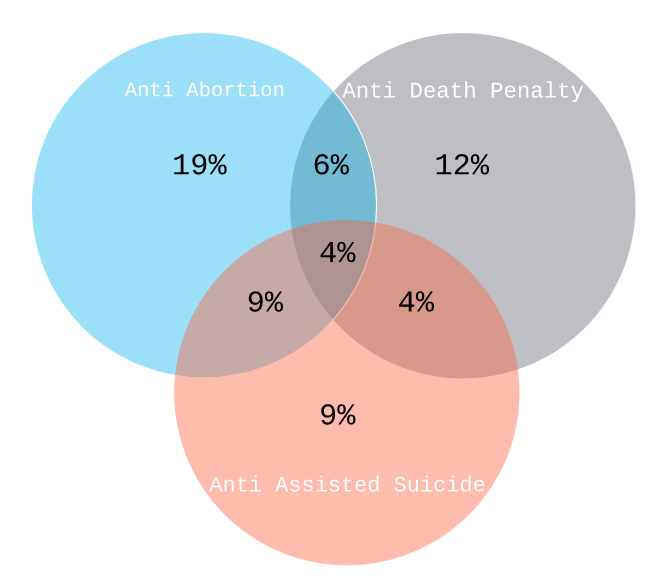Popular opinion on political support of “culture of life” issues that frequently assumes John Paul II would have had a distinctly different emphasis than Pope Francis may be mistaken.
David Albertson recently found himself rereading John Paul II’s 1995 encyclical, Evangelium vitae (The Gospel of Life), during the weeks between the leaking of Justice Samuel Alito’s draft opinion and the shooting in Uvalde.
Pope Francis has drawn criticism for reasserting an integral ethic of life—linking the climate crisis to the dignity of the unborn, for instance—and for resisting the reduction of political responsibility to a single issue. Many of Francis’s detractors assume that John Paul II would have endorsed their current strategy: to trade support for Republican neoliberal economics in exchange for the appointment of pro-life justices, by anti-democratic means if necessary. (Albertson & Preziosi, 2022)
Albertson found the text of Evangelium vitae suggests something quite different. John Paul II offers a probing social analysis of the “culture of death,” in the course of which he articulates some critical principles for a future politics of life. To be sure, the encyclical focuses rightly and above all on abortion and euthanasia. But only an inattentive reader could imagine that those are the only evils John Paul II was worried about. The encyclical offers a structural understanding of contemporary threats to human life, of which abortion is the signal, but by no means sole, instance. Evangelium vitae has many themes.
An insight of the encyclical identifies that the root of the culture of death is an economic system backed by a legal regime. The economic system is the commodification of human life, which calculates its value exclusively in terms of efficient profit accumulation (i.e. neoliberal capitalism). (Albertson & Preziosi, 2022)
John Paul II asks Christians to examine how goods are distributed in our society and who exerts power within that distribution. For example, he examines what links together not only the recent increase in abortion and euthanasia, but also technological investments in artificial contraception, artificial reproduction, and prenatal eugenics.
The link, he concludes, is a certain approach to assessing the value of human life. If we read his analysis carefully, we can depict the main features of the ideology he describes: an excessive concern with “efficiency” (12), a reduction of human beings to disposable “biological material” (14), “the utilitarian motive of avoiding costs which bring no return” (15), and the lack of “fair production and distribution of resources” among countries (16). The goodness of life is reduced to “economic efficiency” and “inordinate consumerism” (23). Human dignity is replaced by “the criterion of efficiency, functionality and usefulness” (23). Human beings become commodities, “reduced to the level of a thing” among other things (34). (Albertson & Preziosi, 2022)
In the encyclical, John Paul II asserts that absolute freedom also includes freedom from the social bonds of truthfulness, or freedom to invent alternative facts.
Once freedom becomes so debased that it justifies “the destruction of others,” then “the person ends up by no longer taking as the sole and indisputable point of reference for his own choices the truth about good and evil, but only his subjective and changeable opinion or, indeed, his selfish interest and whim” (19). (Albertson & Preziosi, 2022)
According to John Paul II, the erosion of truth itself is the final result of valorizing personal liberty, rejecting solidarity, and excluding the weak, sick, and poor from moral obligation by the rich and powerful. “At that point, everything is negotiable, everything is open to bargaining,” he writes, and “social life ventures onto the shifting sands of complete relativism” (20). In this situation, the state becomes a “tyrant” and democracy creeps toward “totalitarianism.” Instead of providing a secure home in which all live together, the state guarantees “the right to dispose of the life of the weakest and most defenseless members” by taking the side of the most powerful partisans (20). (Albertson & Preziosi, 2022)
David Albertson expresses a theme of the encyclical that the culture of life—and with it, democracy and truth itself—can be sustained only when solidarity with “the weakest and most innocent” takes priority above all else, especially an idolatrous claim to absolute freedom.
References
Albertson, D., & Preziosi, D. (2022, July 13). American Idols. Commonweal Magazine. Retrieved July 18, 2022, from https://www.commonwealmagazine.org/american-idols







